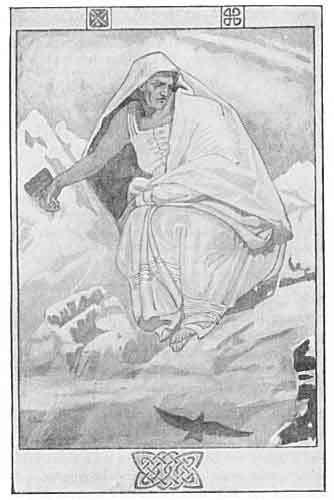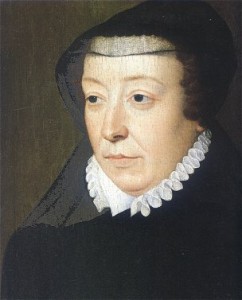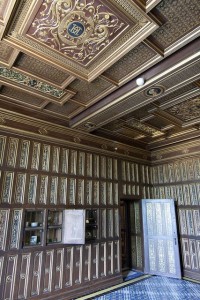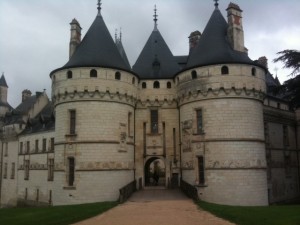Why is my face so dark, so dark?
So dark, oho! So dark, ohee!
Out in all weathers I wander alone
In the mire, in the cold, ah me!
(Wonder tales from Scottish Myth and Legend by Donald Alexander Mackenzie)
According to legend, Dark Beira, the subject of this refrain, is the mother of all the gods and goddesses of Scotland. The Queen of Winter, she is ancient, angry and terrifying, her complexion dark blue, her teeth rust red, her hair as white as frost. She roams the wilds of the north, growing ever older, but never dies. Because always, at the end of winter, she drinks the magic waters of the Well of Youth which bubbles up in the Green Island of the West and grows young again. Then the whole pattern repeats in an endless cycle.
‘I don’t believe it,’ says Sam, Freya’s son in Beyond the Sea. ’Beira couldn’t grow old that quickly and then become young again. I think it’s really just a story about the seasons,’ Indeed. But nonetheless I love it.
I’m a huge fan of myths and legends – tales which, as Freya says, ‘might not be fact, that can’t be proved, but still might be something we choose to believe in.’ They are narratives which explain ancient cultures, their customs and history, their anthropomorphic approach to nature and the landscape around them. What is Beira, after all, but the creation of a people concerned by nature’s long, hard winters and relieved by the almost miraculous arrival of spring. Beira, like the harsh weather itself, rouses the dangerous whirlpool of the Corryvreckan (by washing her shawl within its waters), brings the snow (by laying her clean white shawl upon the mountains) and creates torrents that cause lochs to form (by forgetting to cover over a bubbling well).
In the western islands of Scotland, there are also many myths of the sea. They find their origins perhaps in the restlessness of the ocean currents, but are then transformed into stories of the Blue Men, who seek to sink ships in the perilous waters of the Minch, or the Maid of the Waves, who, like the tides, protect and curse in equal, fickle measure. The stories are rich and colourful, demonstrating the ancient acceptance of the supernatural in the everyday – mermaids, sea fairies and seal-folk, the magical Green Island hidden in the west, where the spirit of spring resides. As a lover of both history and myth, it is the exploration of the crossover, one into the other, that I find particularly fascinating and love to explore in my own writing – the blurred line between fiction and fact in storytelling, between what is ‘real’ and what is imagined. And that in some cases fact is indeed stranger than fiction.
As old blind Torin, a storyteller in Beyond the Sea, says ‘Just because a strange thing happens, it doesn’t mean it cannot be true. Strange things happen every day, peculiar things, odd coincidences, events that come to pass that perhaps we have dreamt about. We have more difficulty accepting these things as real. But it does not mean they are not so…’




